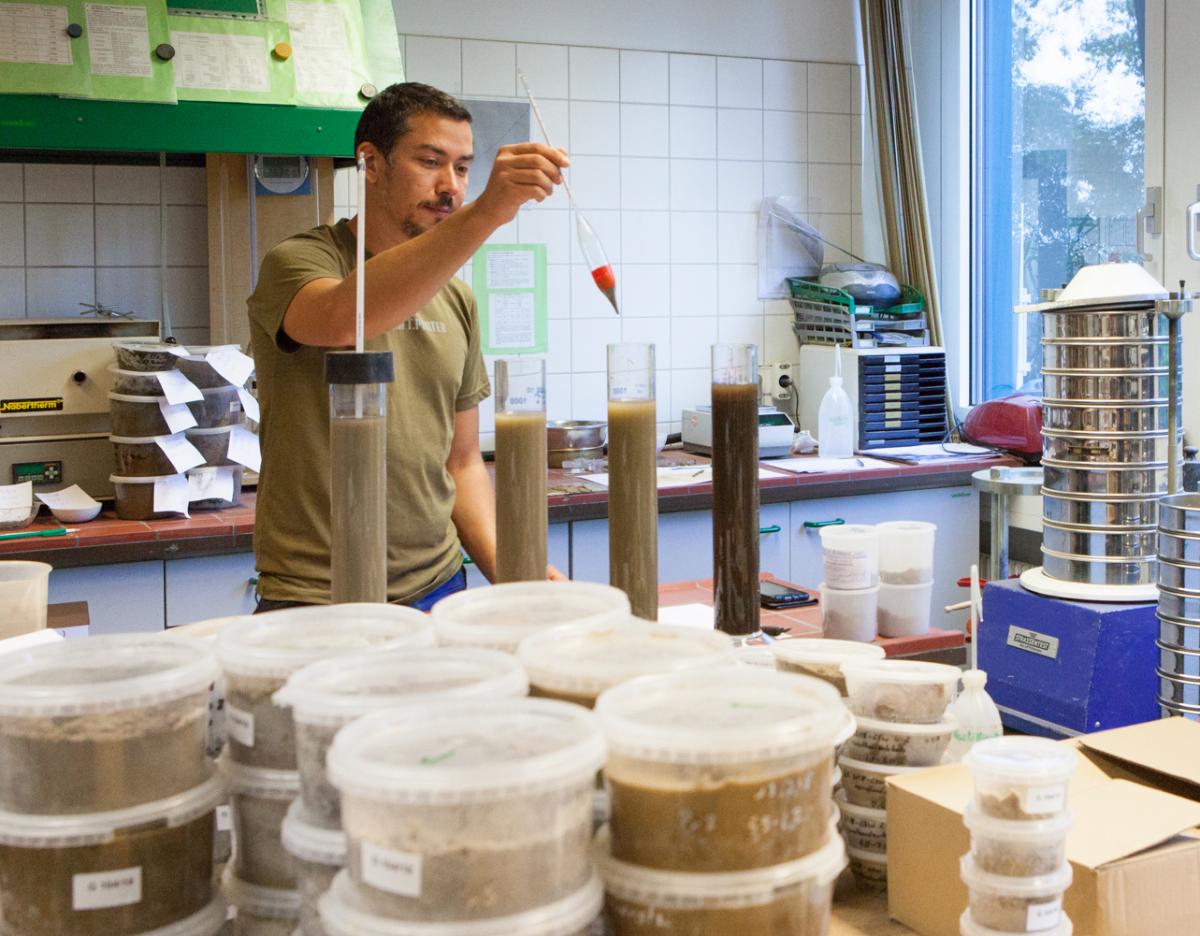Subsoil – geology
Any building requires a solid foundation. Densely populated cities, former mining regions or earthquake regions present particularly difficult challenges for geotechnical engineering projects. Our engineers and geologists of GuD are here in such cases to consult and to eliminate the subsoil as a risk factor in the planning process.
Geotechnical reports - expert opinions on construction site conditions, foundation recommendations, geological expert opinions
A geotechnical report summarises the findings of a subsoil examination carried out in the field and in the laboratory, describes the soil and groundwater conditions encountered, sets up characteristic values for the geotechnical calculations, and releases information on the load-bearing capacity of shallow and deep foundations. A significant outcome of the geotechnical reports are the resulting recommendations with regard to foundations; they will contain advise about foundation options and construction pit variants as well as statements on how to best handle the groundwater. GuD has been issuing a great number of geotechnical reports since 1980 for large and small construction sites in Germany and abroad.
Construction site inspections

Exact knowledge about the existing soil conditions is a fundamental item for the excavation of construction pits or execution of foundations. The engineers and geologists of GuD therefore conduct an inspection of the construction site grounds. The type and extent of the inspection depends on the complexity of the construction works and the conditions expected at the construction site.
Laboratory for soil mechanics

GuD uses recognised site investigation methods and operates their own soil mechanics laboratory. This facilitates a quick and comprehensive consultation. The assessments then lead to dependable investment and planning decisions based on these geotechnical reports and the inspection schedule during construction will secure consistently high quality outcomes during execution.
Applications for permits from the water authorities and preliminary UVP inspection
The downdraw and discharge of groundwater, as well as the addition and introduction of foreign substances into the groundwater are considered a use of the groundwater in accordance with the provisions of the Water Resources Act (WHG), which requires a permit (WE) from the water authorities. The environmental impact assessment act (UVP) states that if a project procedure extracts between 100.000 m³ and 10 Mio. m³ of groundwater, a general preliminary inspection will decide if an environmental impact assessment (UVP) will be required. GuD requests the permits from the water authorities and the preliminary UVP inspection based on the dimensions of the water containments and the forecast of the possible impact on the environment.
Geothermal expert opinions and planning

Geothermal energy offers an approach for the use of environmentally friendly, renewable energy sources. Geothermal energy is gathered with near-surface collectors and probes or geothermically active components (piles, diaphragm walls, base plates) and utilised predominantly in depths up to 100 m. The geothermal expert opinions of GuD include our complete range of services, beginning with a pre-estimate of the geothermal potential on to the planning, modelling and requesting of permits from the water authorities.
Hydro-geological expert opinion
Hydro-geological expert opinions will be issued if the impact assessment of a large construction project determines that the groundwater situation, the transportation of contaminated groundwater, and the clarification of causes for long-term groundwater table changes are more complex than the usual geotechnical report would cover. For these expert opinions the engineers and geologists of GuD use long-term groundwater table measurement series, groundwater isohypses, information about groundwater recharge, about groundwater chemistry, sequences of aquifers and impervious layers, as well as their permeabilities and transmission properties.
Numerical methods / modelling

Complex interrelationships with analytical calculation approaches cannot always be depicted at the required accuracy during the course of a geotechnical planning project. Modelling using the finite element or finite difference methods is used for these cases. These tools allow us to effectively work with tasks like ground-structure interaction with combined pile-raft foundations, but also groundwater flow and transport of contaminated water, calculations of the temperature fields for geothermal systems and ground freezing, as well as calculations in structural dynamics with two or three-dimensional models. GuD utilises programmes like PLAXIS, Modflow, FEFLOW, Temp/W, SAP2000, SASSI2000 or Nastran in their work.
Water containment / dewatering

GuD plans all necessary actions for the collection and drainage of groundwater in construction pits. These consist of wells, wellpoints, or also horizontal drainage troughs used for open or closed groundwater drawdown or as residual water containment in watertight excavation pits. Proven analytical approaches or also the numerical methods of Finite Element or Finite Differences method are used when analysing dewatering measures, depending on the complexity of the boundary conditions and questions that have to be considered. The engineers and geologists at GuD can also take on the role of Appointed Offices for Groundwater, often required by the water authorities as part of the permit process for many larger construction projects.